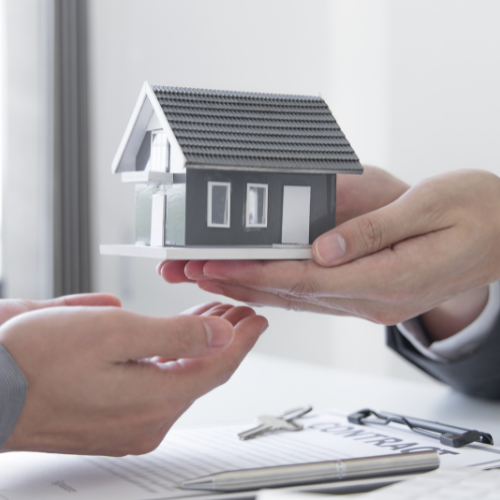A thorough planning and preparation process is necessary to achieve a smooth and profitable transaction when selling a home. There are various crucial actions that may dramatically affect the result of your sale, from improving curb appeal to taking care of critical maintenance. This book will help you prepare a house for sale by guiding you through the crucial steps that will increase its market value and draw in buyers. The below is step by step a complete guide to sell your home.
- Evaluation and Planning: Take some time to do an impartial assessment of your property before beginning any physical alterations. To find any problems that can hinder the sale, think about having your house inspected by an expert. Create a thorough plan outlining the required repairs, updates, and enhancements using the information at hand.
- Increasing Curb Appeal: Improving the curb appeal of your house is crucial since first impressions count. A clean exterior makes a good first impression and attracts prospective purchasers. Mow the grass, tidy up the landscaping, and trim back overgrown plants. Refresh any outdated hardware and repaint the front door. An inviting entrance may create a welcome atmosphere across the whole building.
- Eliminate messes and personalise: It’s essential to establish a neutral and clutter-free atmosphere since buyers want to picture themselves living in the place. Take out any clutter, extra furniture, and personal stuff. In addition to making rooms look bigger, this step enables prospective buyers to picture their stuff in the area.
- Thorough Cleanup: Potential buyers might tell that a house has been well-maintained by its cleanliness. Think about hiring experts to undertake a thorough cleaning of your carpets, windows, and any other surfaces. Be mindful of little things like light fixtures and grout lines. A clean home is more likely to provide a good first impression.
- Updating and fixing: An essential part of getting a house ready for sale is taking care of any required repairs. Fix any little problems, such as running faucets and creaky doors. Also think about strategic improvements that may raise the property’s value. This can include changing lighting fixtures, repainting the walls, and replacing old appliances.
- Neutral Colours Palette Paint is an inexpensive option to change the look of the building and may radically alter a room. Choose neutral hues that are appealing to a variety of prospective customers. The use of neutral colours gives customers a clean slate on which to picture their own distinctive style.
- Upgrades to the kitchen and bathroom: For prospective buyers, the kitchen and bathroom are two of the most important rooms. Consider making improvements like changing worktops and cabinetry or installing contemporary fixtures if your budget permits. The value of the property as a whole may be greatly increased by these upgrades.
Stepping Up for Success
Staging include positioning furnishings and accents to draw attention to the home’s greatest qualities and foster a welcoming ambiance. Professional staging may significantly alter how prospective buyers see the room. However, if working with a stager isn’t an option, concentrate on straightforward staging strategies like placing furniture to make the most of space and using decorative things to create a homely atmosphere.
- Powerful Marketing Tools: Online listings must have crisp, well-written content and excellent photos. The majority of buyers begin their search for a home online, and appealing images may help your house stand out. To make sure your listing presents the property in the best possible light, think about hiring a professional photographer and copywriter.
- Deciding on the Correct Price: It takes investigation and analysis to establish the appropriate price for your home. To help you choose a competitive and reasonable listing price, try researching previously sold similar homes in your neighbourhood. You may also want to speak with a real estate professional.
- Preparation of legal and documentation: Make sure all property and legal paperwork is in order. This comprises land titles, property deeds, surveys, and other necessary disclosures. The selling process may be streamlined by having these papers on hand, and it can also inspire trust in prospective purchasers.
- Public Viewings and Open Houses: Make your property well-lit, spotless, and appropriately presented in order to have it ready for open houses and showings. Consider providing guests with refreshments and booklets with information. Allow prospective buyers time to look around while being accessible to them during showings.
- Patience and flexibility: The process of selling a house may be erratic. Recognise that there may be discussions, delays, and different buyer preferences. To achieve a great conclusion, maintain adaptability and patience during the procedure.
- Marketing Online and Offline: Investigate alternative marketing avenues in addition to web listings to advertise your home. This may include online social networking sites, regional newspapers, and real estate periodicals. A thorough marketing plan may boost your property’s exposure and draw in a larger group of prospective purchasers.
- Work with an estate agent: While it is feasible to sell a house on your own, working with a real estate agent may have several advantages. Experienced agents have market expertise, strong negotiating abilities, and a large buyer network. They can walk you through each phase of the procedure and assist you in overcoming obstacles.
In conclusion, putting a house up for sale requires careful preparation, intelligent improvements, and efficient marketing. You may considerably raise your property’s market worth and make it more appealing to prospective purchasers by following these tips. It’s important to keep in mind that first impressions count, and establishing a warm, well-kept atmosphere may make all the difference in accomplishing a profitable and successful home sale.




